I used the scientifically proven methods in this blog post to improve my flared ribs caused by pectus excavatum. I always hated the way my ribs were poking out of my shirts.
It even made my pectus excavatum deformity appear more severe than it was. Improving rib flare isn’t as complicated as many people think. The process can be straightforward and painless if you implement what you’ll read in this article.
6 POSSIBLE CAUSES OF FLARED RIBS
1. PECTUS EXCAVATUM
Pectus excavatum is the leading cause of rib flare. It causes several ribs and the sternum to grow oddly. It is believed that rib flaring is caused by the diaphragm pushing the lower cartilage of the rib cage outwards.
The diaphragm can’t expand to the thoracic wall due to the pectus excavatum chest cavity. The poor posture causes anterior pelvic tilt, causing deactivation of the abdominal muscles and lengthening them.
2. MUSCULAR IMBALANCE
Pelvis and lumbar spine problems can cause hyperextension. There would be a lot of distance between the ribs and pelvis, causing a rib flare appearance. This isn’t a problem with the form of your ribs.
You won’t need to reshape the structure of your ribs. Assuming that muscular imbalances and not pectus excavatum cause your rib flare, you can improve it by fixing anterior pelvic tilt or hyper lumbar lordosis.
It doesn’t mean your core is weak if you have anterior pelvic tilt and hyper lumbar lordosis and struggle to fix it. It would help if you taught yourself different movement and breathing behaviors that you’re accustomed to because that’s your body’s path of least resistance.
3. BIRTH ABNORMALITY (GENETICS)
Suppose you see in pictures that your rib cage is uneven even from a young age. In that case, it may be caused by a congenital deformity. Your ribs can be naturally flaring, or you may miss a rib.
4. Physical INJURY
There is a chance that your flared or uneven ribs are caused by physical injury. This may be a rib fracture or a muscle sprain. Suppose a bodily injury caused this rib problem several years ago.
If this is the case, I recommend you talk with a certified medical expert to discuss the injury.
5. MUSCULAR WEAKNESS
You may have a rib flare as a result of muscular weakness. The abdominal muscles are responsible for holding the rib cage properly. If the muscles on any side are weaker, it may lead to rib-sticking out on the weaker side.
6. SCOLIOSIS
This is directly correlated to muscular weaknesses and inequities in certain areas. If you have scoliosis, your spine will have an unnatural curvature. The rest of the body will change to this curve, and rib flaring may occur.
I had severe scoliosis from playing video games for at least 6 hours a day while sitting improperly. This caused my rib flare to get worse day by day.
RIB FLARE CAUSED BY PECTUS EXCAVATUM

According to a new 2021 Brazilian study, pectus excavatum is divided into three categories:
- Type 1 (more concave chest depression and minimal rib flare),
- Type 2 (the chest cavity and rib flare are in the same proportion)
- Type 3 (minimal chest cavity and dominant rib flaring).
According to the study, rib flare is usually the patient’s main complaint, not the chest indentation. This is often the case with Type 3 localized pectus excavatum, where the rib flaring is dominant, and the chest depression part is hardly noticeable. I have this type of deformity.
7 MOST COMMON SYMPTOMS
The most common symptoms of rib flaring tend to be:
- Protruding ribs, especially on the left side
- Chest cavity
- Tight and uneven chest muscles
- Weak back muscles
- Forward slouching shoulders
- Forward head posture
- Pectus posture
3 STEPS TO CORRECT RIB FLARE CAUSED BY PECTUS EXCAVATUM
To fix flared ribs caused by pectus excavatum, we should follow the three steps below.
- Correct the pectus posture so the diaphragm will have space to expand correctly and restore structural integrity to the anterior muscle chain.
- Use a compression brace or compression bandage on the malformed ribs.
- Strengthen the core muscles and increase muscle tone
5 EXERCISES TO CORRECT PECTUS POSTURE TO REDUCE RIB FLARE
1. SHOULDER DISLOCATIONS
Don’t be scared! You won’t dislocate your shoulders. It is just the name of this powerful exercise! It will put your shoulders in the right place, stretch your tight chest muscles, and strengthen your upper back. All of this is necessary for proper posture. It is a perfectly safe exercise that will help with rib flare.
I followed my doctor’s advice and made this exercise a part of my daily routine. It would be best if you do this too. In just a week, you can significantly improve your overall posture. Please don’t rush if you’ve never done this exercise before.
All you need is a simple stretch band. I recommend that over a PVC pipe. The resistance band will drastically improve the quality of this exercise. It will adapt to your flexibility standards when you reach the band overhead.
This customization will strengthen and contract the muscles in the back required for an optimal posture.
SHOULDER DISLOCATIONS STEP-BY-STEP
- First, you have to stand up straight with your feet shoulder-width apart.
- Then, please pick up the rubber band with a wide grip (the wider you grip it, the less flexibility you need).
- Extend the band over your head and rotate your shoulder until the band hits your lower back.
Repeat this for four sets of 10. There is nothing complicated about it, but you need to be consistent.
2. PRACTICE PROPER POSTURE THROUGHOUT THE DAY
This habit will revolutionize your confidence and your posture. Doing it is extremely simple. The hard part is making it a routine.
You need to keep your chest up, shoulders back and down, and tuck your chin in to stop the forward head posture. You will initially feel uncomfortable, but you must step out of your comfort zone to fix your posture and flared ribs.
ALARM CLOCK TRICK
The alarm clock trick is the easiest way you can develop this habit. I highly recommend setting an alarm clock to go off every 10 minutes.
When it buzzes, it should remind you to sit or stand properly. If you aren’t holding a proper posture when the alarm goes off, make sure you do the next time!
3. YOGA CORRECTIVE STRETCHES
Performing shoulder dislocations and practicing proper posture during the day is an excellent start to your journey of correcting protruding ribs. After acquiring that habit, I recommend implementing yoga into your routine.
Yes, you heard me right. I don’t care how masculine you feel or how muscular you are. You must do yoga if your ribs poke out of your shirt. All you need is a flat surface and follow the movements of the yoga experts on YouTube. You can do this from the comfort of your household.
Yoga for flared ribs will significantly increase your mood and remove tension and tightness in your chest, abdominals, and neck while strengthening the muscles in the back. Your latissimus dorsi muscle (also known as lats) is probably very tight if you suffer from poor posture.
Yoga is perhaps one of the best ways to stretch this muscle. The downward-facing dog is a great chest expander and latissimus dorsi stretcher. This is a perfect recipe for improving your posture.
Performing yoga for 30 minutes 3 times a week will do wonders for your posture and can help you improve rib flaring.
4. DOORWAY LAT STRETCH
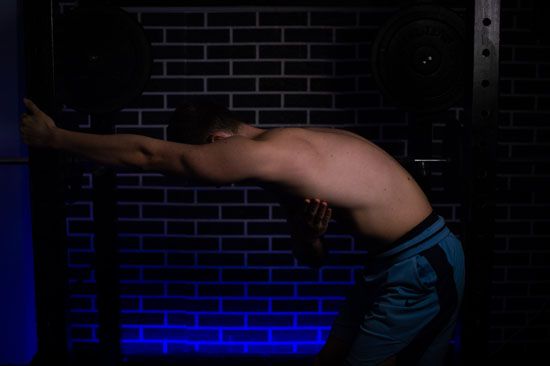
I highly recommend you do the standing doorway lat stretch daily. You’ll see a significant improvement in your posture, and you will significantly reduce your shoulder pain. The best thing is that it will pull the ribcage in your normal position and stretch the same muscles that worsen the rib flare.
You don’t need any expensive equipment for this stretch. All you need is a doorway. I guarantee you can do this stretch everywhere. I advise you to hold the stretch for 1 minute for each arm.
5. PECTORALIS MAJOR STRETCH
As I previously said, most people that suffer from rib flare tend to have extremely poor chest muscle flexibility. This hinders them from performing back-strengthening exercises effectively. Because of this blockage, you won’t have the ability to contract the back musculature fully.
This leads to contracting the muscles in the shoulders, which will do all the work while doing back exercises. This will worsen your posture, and you will never develop that V-shaped back you always wanted.
While performing this pectoralis stretch, always keep your ribcage down. This will increase the intensity of the stretch and help put the rib flare back in the correct position. You’ll feel a better stretch.
Stretching the lats and the pectorals is essential because their lack of flexibility hinders critical overhead motions. Hold the stretch for 1 minute for each hand. For top results, repeat this stretch three times every day.
BRACE CORRECTION
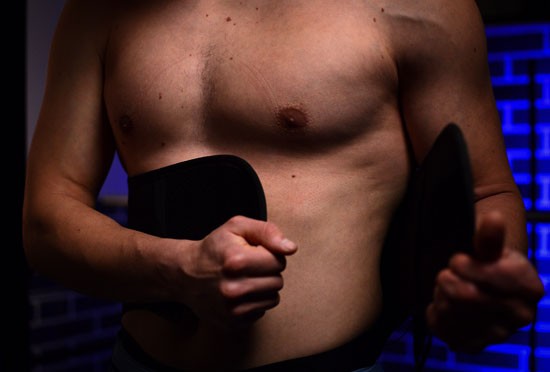
Correcting protruding ribs in young patients with pectus excavatum or carinatum that have flexible chest walls can be done non-surgically with the following:
- Brace – if the rib flaring is more severe
- Strap – if the rib flaring is milder
Combining the strap or braces with physical therapy is always recommended.
In a 2021 study, researchers say treating protruding ribs using the CDTA 2 (DCC 2) orthosis is always possible. Below, I will share images of successfully treated patients with pectus excavatum and protruding ribs with the CDTA 2 brace.
Bracing and the vacuum bell therapy gave me hope in my battle to fix protruding ribs and pectus excavatum. Investing in these devices was one of the best decisions I’ve ever made regarding my physical and overall health.
The braces can modify the malformed bones, even while you’re sleeping. This will drastically improve your appearance and confidence and take your life to new heights.
WOLFF’S LAW AND RIB FLARE
According to Wolff’s law, bones can be remodeled over time if external pressure is applied consistently. Wearing braces that put adequate external pressure will be highly beneficial to correcting rib flare. Bones are also moved by muscles that hold them in place.
Correspondingly, the rib cage area is enormously flexible and can be improved through corrective stretching and posture improvement exercises.
QUICK TEST
If you’re an adult, first, you should do a manual compression on the protrusions of the ribs with your hands. If an improvement in depression is noted, the deformity is considered flexible and possible to fix with bracing or bandage.
Here’s a video explaining how to do this.
INVESTING IN A BRACE IS SMART
A high-quality brace is the best investment to fix flared ribs. I never regretted this decision, and I believe you won’t. You’ll regret the only thing when you realize that you should’ve invested in a rib flare brace years ago.
The rib flare becomes stiffer as you age. That makes it harder to improve with a brace. Ideally, you should buy one when you’re younger, as your ribs are more flexible.
MUSTAFA YÜKSEL ON RIB FLARE
Here is what Prof. Dr. Musfata Yüksel, who is the founder of Pectus Clinic, Turkey’s only treatment center for pectus deformities, had to say about rib flaring:
He was the President of the Turkish Thoracic Surgery Association. You can read more about his expertise here.
BANDAGE TREATMENT
Until 2018, Dr. Yüksel and his team treated rib flare with surgery. However, after being introduced to the Bandage Treatment by their colleague who did flared ribs therapy in his clinic in Turkey, Dr. Yüksel started using it to correct rib flare non-surgically in some patients. Companies in Turkey manufacture the bandage.
TREATMENT PROCESS
The bandage is wrapped on the protruding ribs, and the patient carries it on their body 24 hours a day. Dr. Yüksel proved that you could correct flare ribs with bandage pressure. He observed that patients repaired the problem within 3 and 6 months. The bandage treatment is straightforward.
However, early diagnosis of rib flare and treatment success are connected. Generally, the younger you are, the more effective the bandage treatment.
DR. YÜKSEL YOUTUBE COMMENTS
Here’s what Dr. Yüksel himself commented on the videos I showed above.
- In one of the comments, he recommends surgery for a 35-year-old patient with flared ribs.
- For the 23-year-old patient, Dr. Yüksel has recommended wearing a brace and a bandage.
- You can use a bandage and corset together. It will be more effective. He also says it is harder to treat it with a bandage when you get older.
- In the comments, Dr. Mustafa Yüksel says the duration of applying the bandage should be at least 8 hours a day.
HOW TO USE THE BANDAGE
The bandage is perforated and provides airflow. The area where it is applied will breathe and keep cool during wearing. The material is very soft and elastic and doesn’t prevent blood circulation. It is said it doesn’t cause any itching or allergies.
Bandages can be washed with warm water and sterilized. You can also clean it with soap. It is effortless to dry—also no need for ironing. In the embedded video, you can see the PectusLab bandage and how you can apply it.
CORE STRENGTHENING
The third key element for fixing rib flaring is building a solid core. There is a common misconception about core muscles and abs. Most people with protruding ribs and pectus excavatum search the Internet for a quick fix and only work the transverse abdominals muscles.
These are also known as six-pack abs. That’s a reason why a lot of people failed to improve the flaring rib cage.
DON’T FOCUS ONLY ON SIX PACK
If you focus only on your six-pack abs muscles, you will get a muscular imbalance in the core. Your back muscles will be weaker than your abs, leading to lower back pain. The stability in your spinal area will worsen, worsening your rib flaring.
Developing your core musculature as a whole is a must.
STRENGTHEN AND ADD MUSCLE MASS TO YOUR CORE
The purpose is to add muscle mass and strengthen the core muscles. The focus should be on the following:
- Abdominals
- Obliques
- Transverse abdominal muscles.
I’ve written an entire blog post for the best core exercises for pectus excavatum and flared ribs above.
INCREASE MUSCLE TONE
You will want to improve the muscle tone (also known as residual muscle tension) of your core muscles surrounding your lower ribs. Muscle tone measures how tight your muscles are and how they respond to forces during rest. Strong muscle tone is essential for proper posture.
SQUEEZE THE CORE FOR 20 MINUTES A DAY
This requires a lot of discipline and motivation. I’ve seen Mitja Martel, more known in the pectus excavatum community as StrongClock on Reddit, who has a lot of reputation in our community, explain this.
In a post on Reddit, he said he was skeptical at first doing this because there was no scientific evidence about it, but it worked for him. You have to contract the core muscles to pull your flared ribs in. Keep them squeezed for 20 minutes a day.
You can do this everywhere. At school, at work, while watching a movie at home, going for a walk, etc. The goal is to keep these muscles squeezed for 20 minutes while maintaining a proper posture.
If you can’t do this from the start, hold the muscles squeezed for as long as possible. Then, gradually increase the time each day.
THE CORE WILL BECOME VERY TIGHT
According to Mitja, this trains the muscles to be tighter while resting. You will start feeling your abdominals and obliques become tighter whenever you see yourself in the mirror or touch them. This constant pressure will slowly push your flared ribs back where they belong with time.
Mr. Mitja shared many pictures of himself and data showing how he corrected his pectus excavatum deformity and protruding ribs from 34mm to 2-3 mm in depth in 11 months.
I believe strengthening the transverse abdominal muscles is very important in our case. The girdle of the abs under the main abs (rectus abdominis) provides a great deal of stability. It acts as a sort of corset for your abdomen.
FRANK ZANE RIB FLARE
Frank Zane is an old-school bodybuilder. He had rib flare too. Not only does he have rib flare, but he is known and recognized as having some of the best abs in history. I’ve researched what Frank Zane did for abs on YouTube and the Internet.
These exercises I will share with you came from the Golden Era when people favored tiny waist aesthetics. Frank Zane advocated high repetitions as well.
Frank Zane said that he trains abs every day. He also said that consistency is most important. It would be best if you put in the work every single day.
“I always worked abs every day and did a good 400 and upward for total reps of abs. Before a contest, I’d move that up to as many as 1000 reps a day. “
Frank Zane
These ab workouts lasted about 30 minutes, and as he approached a contest, he would do them for an hour.
FRANK ZANE’S FAVORITE EXERCISES

Frank Zane’s favorite exercises were none other than bare leg raises. He did a lot of reps of leg raises. Alongside, he did roman chair situps. He would do 500 roman chair situps in the morning and then later in the afternoon do 500 leg raises.
You don’t have to do it all the way, but you can implement some of his work ethic and exercises. He was training for Mr. Olympia, the most extreme bodybuilding show. I’ve read several articles that wrote he did these exercises.
Here’s an old video of Mr. Frank Zone explaining how to train your abs.
AUSTIN GOH’S METHOD
Here’s an interesting video by Austin Goh, claiming that you can flatten the protruding rib cage by relaxing the abdominal muscles and pressing the deformed ribs with your own hands.
Many YouTube comments on the video say that this helped decrease rib flaring. I believe this can work because there is a scientific study by Dr. Sydney Haje about how rubbing a baby’s ribs with the thumbs can fix rib flaring.
RUBBING RIB FLARE
Thumb pressure on the flared ribs of babies should be enough to depress the ridges. Rub the protruding ribs in short intervals, with periods of interruption of activity (every 5 or 10 seconds). You can repeat it as often as the child tolerates it (usually 10, 20, or 30 times a day).
RIB FLARE CAUSED BY MUSCULAR IMBALANCE
In this case, the problem isn’t a deformity of the ribs. This is a problem with the pelvis and lumbar spine. If you are extended, the front area will have a lot of distance between the ribs and pelvis, causing a rib flare appearance.
Assuming that muscular imbalances and not pectus excavatum cause your rib flare, you can improve it by fixing anterior pelvic tilt or hyper lumbar lordosis. These two things are very connected. Lumbar lordosis is the natural curvature in your lower back. When it is hyperlordosis, it’s an overextended lumbar spine.
As you can see, extending the lumbar spine is impossible without creating distance between the rib cage and pelvis. That will open your front up and make your ribs stick out. If you have an anterior pelvic tilt, your pelvis is tilted forward, and your back is arched.
You will also have a rib flare if you have hyper lumbar lordosis. The following exercises will help you only if you have a pectus potbelly that worsens the rib flare. These exercises won’t reshape your deformed rib structure.
Many people with muscular imbalances call rib flare what, in actuality, is overextension. It’s a vocabulary issue.
3 EXERCISES TO FIX IMBALANCE
To fix it, you need to change the position of the pelvis and lumbar spine. It would be best to work on the alignment to improve the rib flare.
FOAM ROLL EXERCISE
The idea about rolling the lats in the low back is that the lats attach to the pelvis. When they are very tight, they will pull up on the back of the pelvis, arch your lower back and cause “rib flaring.”
Rolling the lats will release muscular tension, so they’re not so tight.
The function of the spinal muscles in the lower back is very similar. They extend the spine. You will not be so arched in the low back, not tilted forward, and your stomach won’t be so open.
HOW TO PERFORM
Start with the foam roller placed underneath the armpit. Keep your abs squeezed. Lift your hips so there is a lot of pressure on your lats. Focus on rolling the upper lats. Then, come around and get some of the rear lat fibers.
DON’T ROLL THE LOWER RIBS
One area you need to avoid is the lower ribs. Do not roll there. The lower rib area is tiny and unprotected by a lot of tissue, and you can easily injure it. Be careful about this when you foam roll the lats. Stay up high and don’t come too much down.
After you’ve done that:
- Roll the lower back. If you don’t have enough core strength, please, don’t try this.
- Put the foam roller on your lower back, keep the abs tight, and roll out all the tissues.
- Roll the lower fibers of the lats and the spinal muscles. Your core must stay tight during this.
Do two sets of 30 on each lat and two sets of 30 seconds on the lower back.
ALTERNATIVE
Do the child’s pose as in yoga if you find foam rolling the lower back uncomfortable.
ARM RAISE
Extending your arms overhead without arching the lower back and exaggerating the rib flare can be very difficult if you have a rib flare due to muscular imbalance. When you bring the arms up, you stretch your lats. Also, you will mess up the movement pattern because your body is used to the rib flare position.
If you can’t raise your arms without protruding your ribs and extending to the lower back, this exercise will significantly help you. This will help you if you’re an athlete with rib flare who does many overhead movements. Practice overhead movements while not allowing your spine to arch too much.
STEP BY STEP
The first step is to start with your back against the wall cross-legged. Keep your abs squeezed. Raise your arms overhead and touch the wall with your hands. The core must be braced and tight during the exercise.
Do this ten times. Do five sets of 10.
HARDER VARIATION
If it is easy, you can progress by doing this in a standing position. Keep the lower back on the wall. Keep the abs squeezed and bring the arms up and down. This is a more challenging variation. You must be aware of the lower back.
If you raise your arms and sense your ribs flare, your lower back probably arches off the wall. Keep the back flat against the wall as you raise your arms. Make sure you do this exercise last, after the foam rolling and the plank. Do the exercises every other day until you see improvement.
BLOW AIR OUT
We are in a constant state of hyperinflation where we don’t let all our air out. This further worsens our rib flaring. Before doing these exercises, I highly recommend blowing all your air out. Do that as if you’re blowing birthday candles.
Purse your lips and keep blowing air until you feel the abs squeezing. You’ll feel the ribs come down. It can feel challenging to do this.
WHAT HAPPENS WHEN YOU FULLY EXHALE
When you fully exhale, the ribs flatten more. Also, you can feel this in the obliques and the whole abdominal region. That’s what you need to train. Get complete exhalation down the ribs, and hold the obliques in place. Breathe from the new position.
3 CORE STRENGTHENING EXERCISES
The following exercises will strengthen your core. It’s going to bridge that gap between the ribs and the pelvis. If you have rib flare, you’re stretched in that area. These exercises will bring the ribs closer to the pelvis, which will make the ribs come in more so they are not protruding anymore.
POSTERIOR PELVIC TILT PLANK
This will bring the pelvis closer to the ribs, which will help with the rib flare. This is better than a traditional plank in our case. You get in a regular plank position. Make sure your pelvis is at the same level as your shoulders.
Then tuck the pelvis underneath you, like trying to hide your butt. Try to be aware of your upper back. You don’t want to round your upper back. Hold for five sets of 30 seconds.
DEAD BUG
Lay on your back on a mat with your arms by your side. Blow all your air out first. Then, hold it. Feel your obliques engage. Get your legs up and start breathing normally while keeping the ribs down.
Push the knees up toward the ceiling while tilting the pelvis under a little. Ribs are down, and knees are to the ceiling. Create tension in the lower abs and tap with your heel on the ground.
Don’t move anything in your torso. Repeat with the other leg. the key is to teach your body how to resist spinal extension, keep a natural pelvis, and keep ribs down.
When you transfer this skill to other weightlifting exercises, you will have no problem having proper posture with your rib cage and pelvis. Once you can maintain perfect stability to the core, you can upgrade it.
You can add the arms pointed upwards to the ceiling. The first thing you can do with your arms is reach down toward the floor above your head. Tap the arms and bring them back up. Do this as much as your shoulder flexibility allows you to without arching the lower back. Breathe while keeping the ribs down.
Once you master that, add the legs component of the exercise. Opposite arm, opposite leg. Alternate throughout the movement. Do the exercise as slowly as possible. The goal is to resist the deep core, not just the ab muscles.
This exercise will help you teach how to stack your ribcage in the pelvis, resist spinal extension, and teach your deep core to stabilize to keep the ribcage pelvis stacked.
SIDE PLANK
I will mention that some parts of this exercise differ from the regular side plank. First, line up your elbow, hip, and ankle in the same line as a standard plank. You can use a mat or some floor line if you need to.
Next, you are going to post up. You can use your hand to push yourself up to get started. Align from head to toe. The difference here is that you will push the elbow to the ground. The other arm is going to reach forward and across. Inhale and exhale.
While you exhale, reach forward with your arm. Push the ribcage back as you tuck the ribs. Inhale and reach. Keep the ribs tight. Exhale, pushing the ribs further back. Each time you exhale, you will draw the rib cage back further and further until it becomes challenging to inhale.
AB ROLLOUTS
This exercise is critical for developing a functional and robust core (it works every muscle in the core section if done correctly). It is a highly safe exercise that may seem hard initially, but you’ll get it mastered with time.
If you’re having balance and stabilization issues, that is great. That means that your core musculature is fragile and needs strengthening.
AB ROLLOUTS STEP-BY-STEP
- You must hold the Ab Wheel with both hands to perform this exercise.
- Please take it to the floor, and while you’re on your knees, breathe in slowly. Roll forward while squeezing your abdominals.
- After fully stretched, exhale and roll yourself up to the starting position. Repeat.
This will strengthen your core muscles while stretching and expanding your rib cage. Perform four sets of 10 repetitions three times a week. It is precisely how you should perform this core exercise safely while working every minor and major muscle.
SQUEEZE THE ABS THROUGHOUT THE DAY
In addition to the exercises, keep your core braced during every athletic activity. Keep them squeezed at 50% whenever you play sports or lift weights. It will keep your lumbar spine nice and stable and prevent lower back injuries. It will also keep the rib cage down in a braced position.
BREATHING
ZONE OF APPOSITION
People with a natural rib structure have a relationship between the abs and the diaphragm. This connection is called the “Zone of Apposition” or ZOA.
There can be reduced connections between the thoracic diaphragm and the rectus abdominis (also known as abs). If your ribs are flared, this ZOA is gone.
This leads to improper breathing patterns because of poor diaphragmic compression. Also, this can cause decreased ability to contract the abdominals when needed.
INABILITY TO PERFORM A DEEP BREATH
The inverted chest and rib flare conditions prevent your body from having the ability to exhale completely. “Old” air in your lungs contains high CO2 and other toxins. This makes it hard for your body to achieve a Zone of Apposition.
Worse, your body will have difficulty getting into a parasympathetic state. This can increase heart speed rate and decrease intestinal and gland activation.
RIB FLARE SHOULDER AND LOWER BACK DAMAGE
Improper rib cage placement can damage your shoulders and lower back. These are very delicate parts of the human body. If they suffer from an injury, it can take time to heal.
Also, your breathing will never reach its potential if severe deformities affect your heart and lungs. Please, don’t oversee the issue with your rib flare. It can cause problems that harm your overall health. Please don’t let it destroy your potential as a complete human being.
HOW DOES RIB FLARE AFFECT BREATHING PATTERNS?
A proper breathing pattern is achieved by correctly working the diaphragm muscle. When you inhale, the diaphragm shrinks and provides more room for lung expansion. While doing some of the exercises above (the bioenergetics), the surrounding stabilizing muscles work to increase chest extension.
The main job of the intercostal muscles while breathing is to lift the rib cage upward. The issue is that your abdominal muscles are weak from rib flare. They need to pull the rib cage down while exhaling. However, muscular imbalance here causes improper breathing patterns.
EXHALING PROBLEMS & FALSE BREATHING
Suppose the back muscles are more robust than your abs (which is true in most cases of pectus excavatum and flared ribs). In that case, you may be able to inhale more air but have trouble exhaling it.
Prolonged repetitions of false breathing patterns can lead to tons of muscular disproportions and issues, which is terrible for your well-being. That is why practicing proper breathing through yoga, and bioenergetics is a must when correcting rib flare and concave chest.
3 BREATHING EXERCISES
Breathing exercises are an excellent way to increase our lung capacity. Most people who suffer from pectus excavatum and rib flare have tight frontal musculature. Rib flaring can cause trouble in our natural breathing patterns by blocking you from the ability to have deep and grounded breathing.
I find breathing exercises a fantastic way to help ease the symptoms of flared ribs and pectus excavatum. I am surprised that this is rarely talked about. Breathing is such a critical component in our existence as human beings.
OVERHEAD REACH
The following exercise is a breathing exercise that trains us to keep the ribs down when our arms are extended over our head—Anyone with rib flare posture tends to compensate with their ribs and bring them forward to get the arms straight overhead.
When you lift the shoulder, that is shoulder flexion. Some people need to pop their shoulders to get the full range of motion. And you feel it in the lats. This exercise will help you improve that and help you keep the ribs down.
HOW TO PERFORM
Get a ball or some box. Stack your feet on the bench at 90 degrees, bend, take the ball, and put it between the knees. Squeeze the ball with 25 % effort to get the adductors engaged.
Now the first thing is to bring the palms up and in. Exhale and drop the ribs down as you reach up with your arms. Hold this position. When you breathe in, don’t lose this rib position. Bring the arms back just slightly to maintain this position as you inhale.
Breathe again, exhale, and reach for the sky. The ribs should keep pulling back with each exhale, and breathing can become challenging. Breathe in and out until your arms are parallel to the ground.
It becomes tough to breathe, and that’s the entire point of the exercise. When you get the ribs down, your body is not used to breathing in that position. That’s what your body needs to get used to. Use the obliques to hold the ribs down and breathe that way.
TIP
The only way to improve rib flare position is to retrain the nervous system to keep ribs in place. Practicing regularly will make the exercise doable. At first, breathing in at some point during the exercise can be impossible.
It will get better with time. The feeling is fantastic once you get used to it. As you practice, you will get more and more airflow, and you will feel a lot of abdominal activation.
SERRATUS REACH WITH BREATHING
It would be best if you had a post and a band. You can also use a cable machine. But if you want to do this at home, I prefer using a band and a post. Put the ball between the knees and turn the knees inwards so the adductors turn on. Put the band behind you and go with an underhand grip against the post.
Exhale and reach as if you are reaching for some apples. Protract the shoulder blades and engage the serratus muscle. With each exhale, bring the ribs back, and reach above slightly. Reach one hand at a time. You’re constantly reaching with each side until you can’t go further. You will feel the serratus muscle.
This is also a great exercise if you have scapular winging. You probably have scapular winging because your rib cage is abnormal, and the scapula cannot glide on the rib cage correctly. It would be best if you restored the scapula’s functioning.
Use airflow to draw the ribs down. Push the rib cage back into the scapula. And then, the scapula can glide up and down the rib cage. Try it.
SPINE STABILIZATION BREATHING EXERCISE
Lay on a mat on your back. Have your knees bent or straight. Put your hands on your flared ribs, with the fingers in the front body and the thumbs wrapped behind. Breathe into the ribcage letting the ribs expand.
But then, as you exhale, focus on the ribs moving back to the center. Breathe in with the ribs open. On the exhale, find your abdominal activation. The ribs move in the center, moving down the body towards the hips.
Keep the abdominals active and focus on the ribcage as you exhale. The ribs move to the centerline down the body. Your body is like you’re skewering into the mat. Exhale the navel draws the waist narrows the ribs narrow. Relax with your hands by your sides.
This activation is going to be what helps stabilize the spine while you move your arms overhead. Bring your arms to the ceiling. Without activation, you will bring your arms overhead, and you can notice what happens in your spine.
Look at the arch underneath your ribcage in your lower back. You can feel that. And you see, the front ribs are very protruding.
Stabilize the spine, helping the shoulders while your arms go up and down. With the fingertips to the ceiling, arms are wider than shoulders width apart, take a breath in, and exhale. Activate finding and anchoring, then initiating movement, keeping the opposition of heavy ribs and buoyant arms.
Inhale, return the arms and exhale, find the abs’ activation and the ribcage, then start the action with the arms. The arms are gestures here. The work is in the torso. You’ll have an excellent flat ribcage in the front and a heavy arch in the back, the perfect creation of the thoracic curve you need.
BIOENERGETICS FOR RIB FLARE
Elliott Hulse, who I previously mentioned, believes in breaking down muscular tension and tightness to have a smooth, natural breath. That is achieved by what he says, bioenergetics.
At first, I was skeptical about how performing these tribal sets of exercises would help me with my rib flaring. But I decided to give them a try. Surprisingly, the first try convinced me I should perform these deep breathing exercises daily.
I felt that my muscular tension in the chest and abdomen was gone. At first, you will vibrate a lot during these breaths. Don’t be scared. That is trauma and tension leaving your body. Preferably, you should perform these breathing exercises in the morning or the evening.
Re-learning how to breathe deeply through bioenergetics will be beneficial for you. They are straightforward to perform, and you only need five minutes in your day. The exercise I recommend the most is called the bow.
IF RIB FLARE IS CAUSED BY SCOLIOSIS
The fib flare in thoracic scoliosis comes from a rotation in the spine. When we want to fix this, we first need to lengthen the spine and derotate it.
EXERCISES
SHOULDER STRETCH
The first pose that you need to do is the shoulder stretch. The right shoulder in a right thoracic curve needs more space. Bring the left forearm parallel to the front edge of the mat and reach the right arm forward.
Imagine that you are melting the right side of your chest down to the ground and more. Hold it for five breaths. See how it feels. Reach through the right fingertips. Take another couple of breaths and slowly bring yourself up.
Roll the shoulders a couple of times. Repeat this on the left side if you want. However, you know that the right side with a thoracic curve needs more extra. If you do it on the left side, you return to the right side again. Feel the difference.
DOWNWARD FACING DOG
The following exercise is the extended downward-facing dog or extended child pose. To start, sit back on your heels and reach your arms forwards. There are a couple of things you need to adjust to the exercise.
Lengthen the left side a little bit more. Slide the left arm forwards slightly more than the right to create more space. To counter that rib flare caused by rotation, you need to derotate the spine. Give more lift on the left side.
TOWEL VARIATION
There are ways to do this. Support the left ribcage with a hand towel to lift it slightly more. This derotates the body. Imagine the right side dropping a bit more and the left side getting a bit more lift.
From there, imagine you’re breathing into your ribcage’s left side and out from the right side. Breathe in the left and breathe out from the right.
Slowly bring yourself up. This feels good to lengthen, stretch, and derotate the spine. It feels very nice to practice.
CHAIR VARIATION
It would be best if you had a chair for the next stretch. Bring a yoga block or anything to squeeze in between your thighs. Have the chair’s back towards the wall and your legs over to the side.
Twist toward the right side first. Lift and lengthen and feel to make more space on the left space on your ribcage by pulling the right ribcage in.
From there, twist toward the back of the chair. Now twisting this way takes you further into the rib flare. Be very conservative with this side. You don’t need to do a lot here. It’s nice to rotate toward the right to open the right shoulder.
You’ll see that the right shoulder blade comes back and down slightly. That’s what you need to do. You shouldn’t pull yourself further into the rib hump.
Imagine lengthening the right shoulder back and down. Then it is a little bit of a twist. If you have a lumbar curve, this is the site where you can rotate a little bit more from the left. Slowly release and do the other side.
On this side, you will reduce the rib flare. Push the right side forward. Lengthen first and turn towards the left. Turn from the rib cage. See how you feel about the poses. Internalize the stretches. It may sound not easy, but it is easy to do once you get used to it.
YOGA SESSION FOR SCOLIOSIS
I find yoga to be very helpful in improving rib flaring. It stabilizes the rib cage, improves breathing capacity, improves posture, and strengthens your core. It combines everything you need to correct the rib flare condition. Additionally, all you need is a yoga mat and a device that has access to YouTube.
CHIROPRACTIC FOR RIB FLARE
You can check the following interesting video of Dr. Brenda Mondragon, licensed chiropractic, doing therapy on a worried patient with scoliosis and rib flare.
SURGICAL CORRECTION OF PROTRUDING RIBS
SHYAM KOLVEKAR OPINON ON RIB FLARE
Dr. Shyam Kolvekar, a Consultant Cardiothoracic Surgeon at St. Bartholomew’s Hospital, London, was asked about rib flare (costal flare) on a YouTube Live video.
He was asked whether correcting the pectus excavatum deformity makes the rib flare disappear at the 40:55 minute mark in the video below.
He says that the Nuss procedure only moves the sternum forward. Often it lifts the costal margin and gets the flare reduced. In some people, it disappears. Very rarely, when rib flaring is terrible, it will require bracing to suppress the coastal flare.
DR. MUSFATA YÜKSEL ON FLARED RIBS SURGERY
Dr. Musfata Yüksel and his team fixed flared ribs only with surgery in the past. He says that they were removing displaced parts of the rib cage completely. They thought that the weakening of the thorax didn’t harm the patient. However, the introduction of the bandage treatment changed everything for younger patients.
Dr. Musfata Yüksel still fixes protruding ribs with surgery, but only if the patient is older and whose problems can’t be fixed with the bandage method.
DR. MALUCELLI SURGERY
Dr. Antonio Vendrami Malucelli noted that 50% of all pectus patients had flared ribs. Because of that, patients looked as if they had prominent bellies. He evaluated more than 2,400 patients and completed 460 surgeries for all pectus deformities.
Dr. Malucelli and his coworkers created a specific surgery that solved pectus excavatum and flared ribs to treat these patients. This is called the Malucelli Surgery, which can be done in males and females. The surgery is done in conjunction with a plastic surgeon on the team.
SPECIAL SURGERY FOR FLARED RIBS
The Nuss procedure is most suitable for patients with symmetrical pectus excavatum that don’t have considerable rib flare. Patients can still undergo Nuss surgery but may not see a satisfactory reduction in the flaring.
After a Nuss procedure, the rib flaring in some patients remains and sometimes even worsens. Generally, surgeons cannot predict the outcome of the Nuss procedure on the rib flaring.
The remaining flaring of the ribs can be repaired with minimal subperichondrial partial resection of the costal arch cartilage. In 5 patients, this supplementary method produced satisfactory results.
MAGIC STRING TECHNIQUE
In 2016, a “magic string” technique was invented to correct flared ribs in sandwich surgery. This technique can successfully restore protrusion, but surgeons can’t use it to correct independent rib flare deformity.
The problem is that many people have only rib flare and not any other associated deformity. When flared ribs exist with pectus excavatum and pectus carinatum, surgeons can surgically correct them during the same operation. Because of this, a group of surgeons decided to create a minimally invasive surgery to treat only flared ribs.
The surgery was performed on nine patients with rib deformities during the study. After the surgery, surgeons corrected the deformities, and their appearance was normal. There were no complications. The study confirmed that this is an ideal surgery for flared ribs.
SPECIAL SURGERY ONLY FOR FLARED RIBS
The surgery was performed on nine patients with rib deformities during the study. After the surgery, doctors corrected the deformities, and their appearance was normal. There were no complications. The study confirmed that this is an ideal surgery for flared ribs.
Surgical methods for flared rib deformity were affiliated procedures, not created only to fix flared ribs. Many patients have protruding ribs without additional complex deformities, such as pectus excavatum.
My Experience With Rib Flare
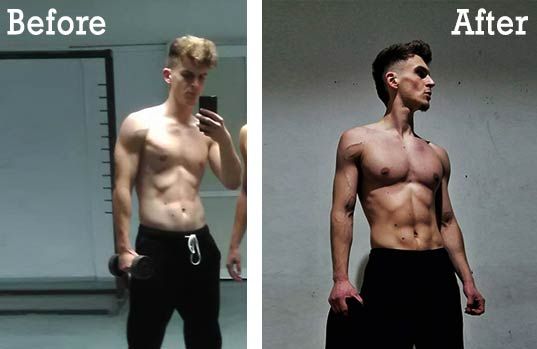
Back in the day, I had a severe case of protruding ribs worsened by bad pectus posture, weak back musculature, and poor core strength. I didn’t treat my pectus excavatum and rib flare because I thought it would improve on its own. I neglected this nagging problem for years.
I tried to hide my flaring ribs by keeping my shirt on, even on 100 Fahrenheit summer pool party days. My friends and girls constantly asked me why I always wore a shirt. I had a ritual of thinking of stupid excuses to say to them to earn their approval.
I Felt Anxious and Devastated
One day I got tired of my flared ribs as my anxiety increased, my posture degraded, and my confidence shattered. I was overwhelmed by the constant thoughts of what people thought of me.
On top of that, I started to get some irritating chest and shoulder pains. I felt awful about my rib flare because I believed it was a rare deformity. I know how you feel deep inside because I went through the same situation in my teenage years. I always felt embarrassed and got terrible social anxiety.
Information About Rib Flare Was Scarce
A few years ago, the only thing that I could do was go to the doctor. Information on fixing flared ribs and pectus excavatum without surgery was scarce in libraries and on the Internet.
I was perplexed because of the lack of materials about the condition. I couldn’t get Health Insurance to cover my surgery costs because my Haller Index was lower than 3.25.
In addition, if I opted for the surgery, I couldn’t participate in any sports or activity that raised my heart rate to a certain point. This wasn’t what I was looking for, as I love being physically active.
An Appointment that Changed My Life
Luckily, I stumbled upon Dr. Blagoja Gjorgjieski, a specialist physiatrist, yoga professor, and president of the Yoga Association of Macedonia. He is a doctor that works at the city hospital in my hometown of Prilep, Macedonia. He claimed I could improve rib flaring and pectus excavatum without surgery.
I was utterly excited about the news. All my hard work to find a solution for rib flare without getting two titanium bars under my chest finally paid off!
My rib flaring decreased, and my nagging chest pains went away. The results are permanent. I could finally take off my shirt confidently and comfortably interact with everyone! You can see more photos of my pectus excavatum here.
Notice how less noticeable my protruding ribs are after strengthening my core and overall body musculature, improving my posture, fixing muscular imbalances, and constantly wearing a brace. Notice how less noticeable my protruding ribs are now than before.
RIB CAGE IMPORTANCE
The rib cage plays a massive part in spinal stability. The rib cage placement mainly determines the structural integrity (function) of the neck, shoulders, scapula, and lumbar spine. Any rib or chest disorder causes multiple problems in the upper body movement patterns and organ functioning.
Your shoulders won’t be able to operate as they should. Other joints will compensate for their function in your body. This can lead to irritating shoulder pain.
DON’T IGNORE RIB FLARE
The ribs are a very underrated component in the development of proper posture. Any disorder in this part of the skeletal system can cause shoulder, neck, thoracic, and lumbar spine pain.
LEFT-SIDE RIB FLARING IS MORE COMMON

Flared ribs tend to stick out on both sides but are more common on the left side. In some cases, the rib flaring is far more apparent and worse than the pectus excavatum or carinatum deformity itself.
Idiopathic scoliosis plays a massive role in this.
HOW IS LEFT RIB FLARE FORMED
Left side rib flare creates right lumbar rotation and compensatory left thoracic rotation. The ribs rotate externally in response to the thoracic rotation, giving you the flared ribs look.
On the other hand, the ribs on the right side will turn internally and give you a smoother rib cage. This rotation generates an asymmetry of the diaphragm.
HEART COMPRESSION
In some severe cases, the rotation may press the heart inside, causing chest and heart pain. The degree of severity is different in most cases. Thankfully, this is rare, but it shouldn’t go untreated.
UNEVEN SHOULDERS CAUSED BY RIB FLARE
Rib flare is also associated with uneven shoulders. If you have a protruding left rib, your left shoulder is probably higher than the other. This can cause painful nerve impingement. That can lead to numbness in the entire arm and shoulder area.
RIB FLARE LOWERS SELF-ESTEEM
Scientists have discovered that those who suffer from protruding ribs and pectus excavatum have far less self-confidence than others. Many people that have these deformities have a slumped-over posture. The ability to express yourself and have a standard set of social skills requires a strong and upright posture.
Analyze people during social interactions. You’ll realize that those with rounded shoulders usually hold their heads down and can’t maintain eye contact for long. These people have trouble interacting with others.
PURPOSE OF COASTAL MARGINS
The costal margin function protects the organs in the higher abdominal area, such as the liver. It is also one of the attachment points of the diaphragm. Most of us with pectus excavatum can locate the costal margin because of our lower body fat percentage and because it can protrude outward.
FLARED RIBS ARE RARELY MENTIONED
Pectus excavatum and pectus carinatum are the most common thoracic deformities. Other deformities, such as flared ribs deformity, are rarely mentioned. However, this deformity is always considered a part of complex deformities such as pectus excavatum.
For example, in the Ravitch procedure, the costal cartilage is removed and connected to the rib arch with the sternum.
RIBCAGE BRAGGING TREND

Ribcage bragging is the name of the supposed standard of beauty trend in 2017. Bella Hadid, Rita Ora, Nicole Scherzinger, Kourtney Kardashian, Stefanie Giesinger, Kate Beckinsale, Kate Hudson, Myleene Klass, and Chloe Madeley were a part of this trend.
This new beauty trend was viral in 2017 on Instagram. The models were showing how much their rib cage was protruding. Most people find that very weird. These trends can affect the population because they will be subject to unhealthy weight loss to show how low their body fat is. Most of these models are naturally skinny.
However, they lose even more weight to brag about their rib cage. Models have to be thin, but their fans were concerned about their health and being underweight. Please, don’t be lured by such trends. You’re already naturally skinny.
You don’t need to get leaner to show off your protruding rib cage even more. The good part about having a naturally flared rib cage is that you don’t have to sacrifice your body to get so much lean to be a part of this trend.
RIB FLARE CAN BE SEEN THROUGH THE T-SHIRT
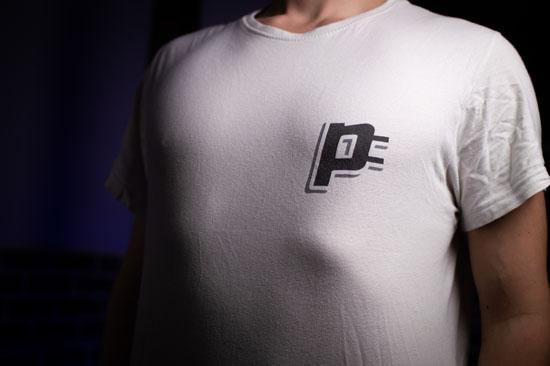
Depending on the severity, many people with rib flare can see the ribs popping through their t-shirts. A rib flare is also characterized by ribs popping out and being visible even through clothes. If the t-shirt is light-colored, people can notice it more than if you wear darker clothing.
HOW TO DEAL WITH RIB FLARE DURING PREGNANCY
Ribs that poke out during pregnancy are more common than you think. There is nothing to panic about, as the rib cage will return to normal after childbirth. Pregnancy causes a lot of changes in woman’s bodies.
As the uterus expands, it presses on the low coastal rib edges. The movement and growth of the fetus also increase the force on the rib cage. The woman’s body fights this pressure with rib expansion. The rib flare may happen on both sides, but usually, it only affects the ribs on the right.
This condition occurs mainly during the third trimester.
WHEN TO SEEK FOR HELP
It may seem frightening initially, but there is nothing to worry about. Most women look at rib flare in pregnancy as an appearance issue. However, some may experience severe chest and rib pain daily.
If this happens, you should check with the doctor and see whether Tietze syndrome or pectus excavatum plays a part in this. I have some tips for females suffering from rib flare pain during pregnancy.
STOP SITTING IN LOW CHAIRS
Avoid sitting in short chairs that force you to bring your flared rib cage to the pelvis. Doing this will apply pressure to the rib area and may worsen the pain significantly.
I’d recommend you switch sitting and lying positions as often as possible as soon as you feel pressing pain.
DO THIS FOR AN INSTANT PAIN RELIEF
If you want instant relief as soon as you feel some pain in the protruding ribs during pregnancy, do the following two things:
- Bend the arm sideways. Lift the arm to the side where the pain occurs, and bend it sideways, away from the discomfort. If this doesn’t decrease the pain, do the following.
- Sit in a cross-legged position, just like you would when meditating. Put your hands overhead just like you’re praying.
Hold that position for 1 minute to eliminate any pain.
MEDITATION
If you’re a fan of meditation, you can also do that for as long as you’re comfortable sitting. Focus sharply on the pain, which will go away as soon as you do that.
These two exercises are a great alternative to painkillers, which can harm your body during and even after pregnancy.
THIS STRETCH IS PERFECT FOR POSTURE & PAIN TO HELP
- Stand in front of a wall with your feet set shoulder-width apart. Stay no further than 60 cm away from it.
- Extend both arms and put your palms on the wall at a 90-degree angle.
- Stretch your shoulder joints as much as you possibly can.
It would be best if you held this position until you felt uncomfortable. Do this as often as you want, as this exercise has no side effects.
This raises the thoracic diaphragm and flared ribs away from the uterus. This stretch represents the downward-facing dog in yoga. It is one of the best stretches to improve shoulder mobility and posture and relieve rib pain during pregnancy.
But doing yoga in the third trimester of pregnancy can be pretty uncomfortable. This is where this exercise comes into play. It mimics the best yoga pose without putting your body under pressure.
If you do these exercises the moment you feel pain in your rib cage, you’ll instantly feel relieved from any discomfort. My advice is to do them as often as you can. This will quickly bring your flared ribs back into their spot shortly after birth.
CONCLUSION
I first published this article in 2015.
Since then, I’ve received many motivating messages on my e-mail and social media accounts on how this article helped people with flared ribs improve their condition.
This gave me hope to constantly update this article in detail with the newest information about rib flaring. More evidence shows that you can fix this disorder without undergoing expensive surgery for flared ribs.
I listed a few other exercises people who corrected their rib flare used daily to fix their conditions.
It is crucial to wear the brace and perform the exercises daily, even when you don’t feel like doing that. In addition, you will experience psychological benefits just by following the exercises. At first, obtaining a routine will be difficult. Please perform the exercises and stretches even when you don’t feel like doing them.
After 66 days, this will become a habit, and you will feel more motivated than ever to repair the ribs that stick out. Thank you for reading! Please send me a direct message or comment below if you have any concerns.
32 Sources
- Pectus excavatum - PMC [Internet]. [cited 2022 Dec 4]. Available from: https://www.ncbi.nlm.nih.gov/pmc/articles/PMC4901030/
- Does a Rib Flare Mean My Core is Weak? [Internet]. 2021 [cited 2022 Dec 4]. Available from: https://www.youtube.com/watch?v=_qGgHbP8OQk
- Scoliosis - Symptoms and causes - Mayo Clinic [Internet]. [cited 2022 Dec 4]. Available from: https://www.mayoclinic.org/diseases-conditions/scoliosis/symptoms-causes/syc-20350716
- HAJE DDP, HAJE SA, VOLPON JB, SILVA ACOD, LIMA LFB, HUANG W. LOCALIZED PECTUS EXCAVATUM TREATED WITH BRACE AND EXERCISE: LONG TERM RESULTS OF A BRAZILIAN TECHNIQUE. Acta Ortop Bras. 2021;29(3):143–8.
- Wolff’s law. In: Wikipedia [Internet]. 2022 [cited 2022 Dec 4]. Available from: https://en.wikipedia.org/w/index.php?title=Wolff%27s_law&oldid=1116135964
- Pektus Klinik | Prof. Dr. Mustafa Yüksel [Internet]. [cited 2022 Dec 4]. Available from: https://www.pektusklinik.com/mustafa-yuksel#mustafa_yuksel
- Muscle tone. In: Wikipedia [Internet]. 2022 [cited 2022 Dec 4]. Available from: https://en.wikipedia.org/w/index.php?title=Muscle_tone&oldid=1088352005
- StrongClock (u/StrongClock) - Reddit [Internet]. [cited 2022 Dec 4]. Available from: https://www.reddit.com/user/StrongClock/
- StrongClock. Reducing rib flare [Internet]. r/PectusExcavatum. 2019 [cited 2022 Dec 4]. Available from: www.reddit.com/r/PectusExcavatum/comments/bxv3nb/reducing_rib_flare/
- M/30/6’0" [150lbs to 180lbs] (1 year; 4 months) : Brogress [Internet]. [cited 2022 Dec 4]. Available from: https://www.reddit.com/r/Brogress/comments/dountu/m3060_150lbs_to_180lbs_1_year_4_months/
- Frank Zane. In: Wikipedia [Internet]. 2022 [cited 2022 Dec 4]. Available from: https://en.wikipedia.org/w/index.php?title=Frank_Zane&oldid=1125260560
- Petroll WM, Knight H, Rochester DF. Effect of lower rib cage expansion and diaphragm shortening on the zone of apposition. J Appl Physiol (1985). 1990 Feb;68(2):484–8.
- Parasympathetic nervous system - Wikipedia [Internet]. [cited 2022 Dec 4]. Available from: https://en.wikipedia.org/wiki/Parasympathetic_nervous_system
- Jun HJ, Kim KJ, Nam KW, Kim CH. Effects of breathing exercises on lung capacity and muscle activities of elderly smokers. J Phys Ther Sci. 2016 Jun;28(6):1681–5.
- Hulse E. The Four Layers of Strength. :73.
- Management of chest wall deformities: Pectus [Internet]. 2018 [cited 2022 Dec 4]. Available from: https://www.youtube.com/watch?v=qIdTHlgCLxs
- Sobre o Dr. Malucelli - Pectus [Internet]. [cited 2022 Dec 4]. Available from: https://pectus.drmalucelli.com.br/sobre-o-dr-malucelli/
- Cirurgia de Malucelli + Procedimentos Conjuntos - Pectus [Internet]. [cited 2022 Dec 4]. Available from: https://pectus.drmalucelli.com.br/cirurgia-de-malucelli-procedimentos-conjuntos/
- Cirurgia de Malucelli para Pectus Excavatum/Carinatum/Mixto - Pectus [Internet]. [cited 2022 Dec 4]. Available from: https://pectus.drmalucelli.com.br/cirurgia-de-malucelli-para-pectus-excavatum-carinatum-mixto/
- Wells FC, Coonar AS. Nuss Procedure for Pectus Excavatum. In: Wells FC, Coonar AS, editors. Thoracic Surgical Techniques [Internet]. Cham: Springer International Publishing; 2018 [cited 2022 Dec 4]. p. 53–5. Available from: https://doi.org/10.1007/978-3-319-66270-1_14
- Minimally invasive operation for costal arch deformity | Surgical Case Reports | Science Repository | Open Access [Internet]. [cited 2022 Dec 4]. Available from: https://www.sciencerepository.org/minimally-invasive-operation-for-costal-arch-deformity_SCR-2-104
- Bosgraaf RP, Aronson DC. Treatment of flaring of the costal arch after the minimally invasive pectus excavatum repair (Nuss procedure) in children. Journal of Pediatric Surgery. 2010 Sep 1;45(9):1904–6.
- The sandwich technique for repair of pectus carinatum and excavatum/carinatum complex - PMC [Internet]. [cited 2022 Dec 4]. Available from: https://www.ncbi.nlm.nih.gov/pmc/articles/PMC5056943/
- Rib Flare | Pectus Clinic [Internet]. [cited 2022 Dec 4]. Available from: https://www.pectusclinic.com/conditions/rib-flare/
- Yang JM, Lee JH, Lee DH. Effects of consecutive application of stretching, Schroth, and strengthening exercises on Cobb’s angle and the rib hump in an adult with idiopathic scoliosis. J Phys Ther Sci. 2015 Aug;27(8):2667–9.
- Hadolt B, Wallisch A, Egger JW, Höllwarth ME. Body-image, self-concept and mental exposure in patients with pectus excavatum. Pediatr Surg Int. 2011 Jun;27(6):665–70.
- Costal margin [Internet]. Kenhub. [cited 2022 Dec 4]. Available from: https://www.kenhub.com/en/library/anatomy/costal-margin
- Gefährlicher neuer Magertrend: “Ribcage Bragging” [Internet]. 2017 [cited 2022 Dec 4]. Available from: https://www.maedchen.de/life/gefaehrlicher-neuer-magertrend-ribcage-bragging
- Latest celebrity Instagram trend is “ribcage bragging” | Daily Mail Online [Internet]. [cited 2022 Dec 4]. Available from: https://www.dailymail.co.uk/femail/article-4486140/Is-ribcage-bragging-worrying-trend-yet.html
- Suffering from pregnancy-related aches? Types of pains and how to deal with them. The Economic Times [Internet]. 2019 Oct 3 [cited 2022 Dec 4]; Available from: https://economictimes.indiatimes.com/magazines/panache/suffering-from-pregnancy-related-aches-types-of-pains-and-how-to-deal-with-them/articleshow/64135931.cms?from=mdr
- Rib pain during pregnancy: Causes and tips for relief [Internet]. [cited 2022 Dec 4]. Available from: https://www.medicalnewstoday.com/articles/325411
- Tietze Syndrome - NORD (National Organization for Rare Disorders) [Internet]. [cited 2022 Dec 4]. Available from: https://rarediseases.org/rare-diseases/tietze-syndrome/


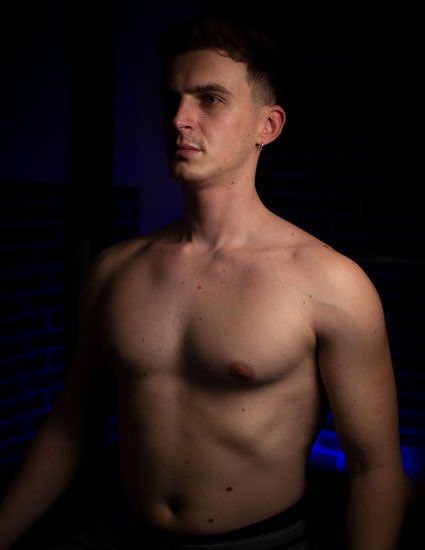
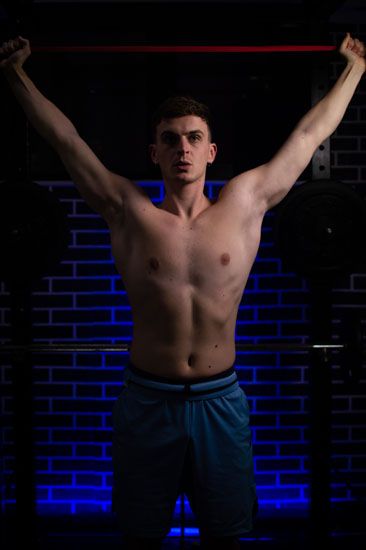
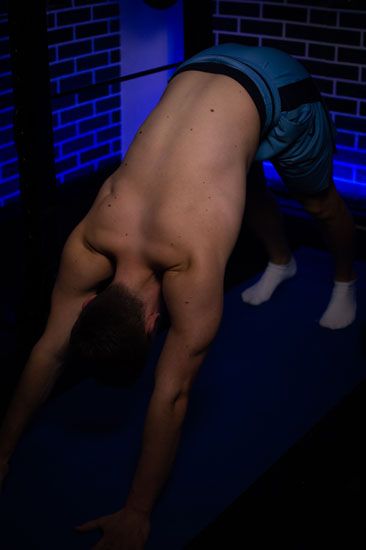
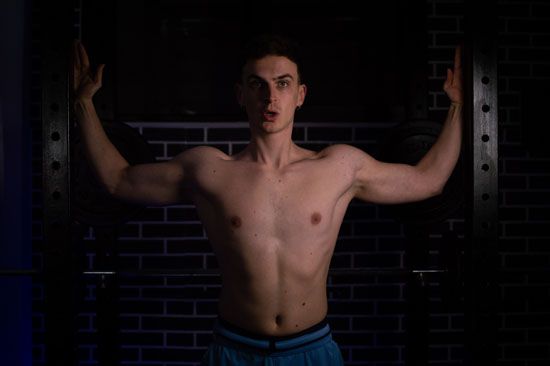



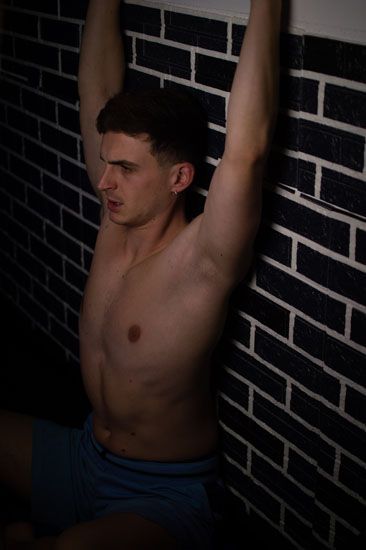
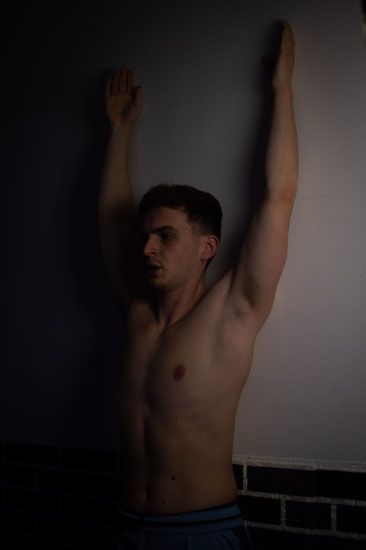


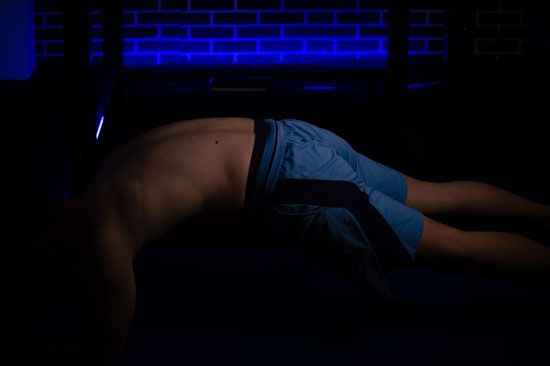



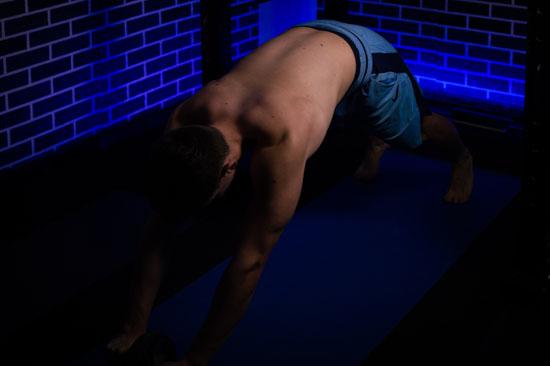
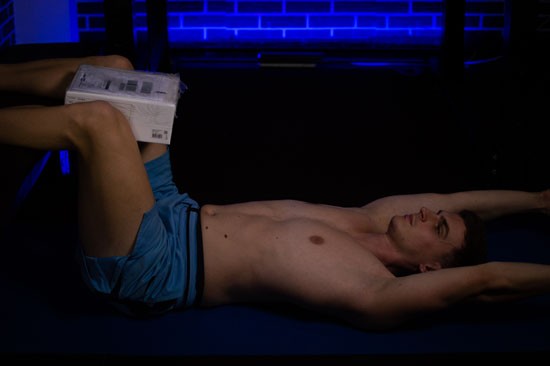
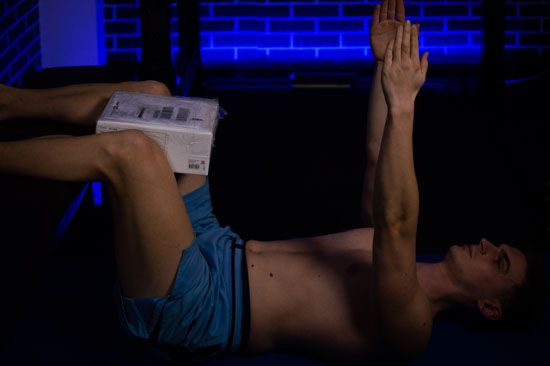
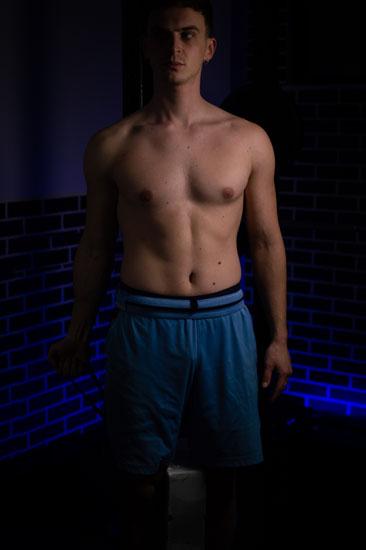
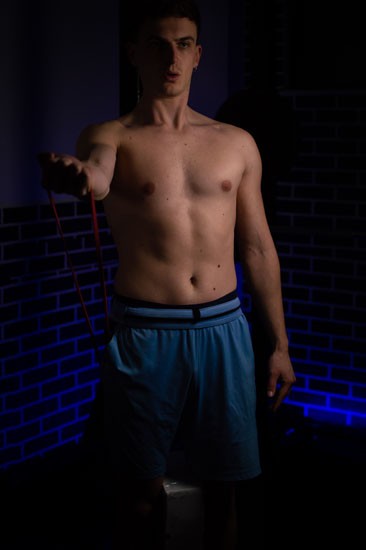
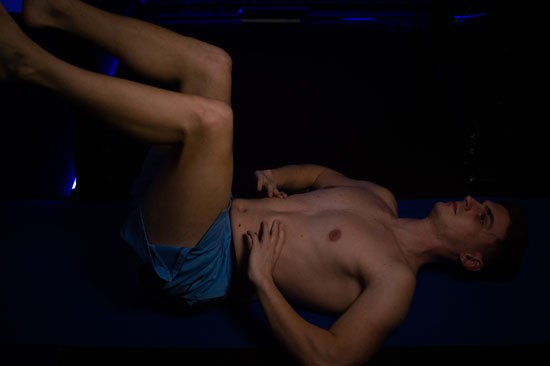
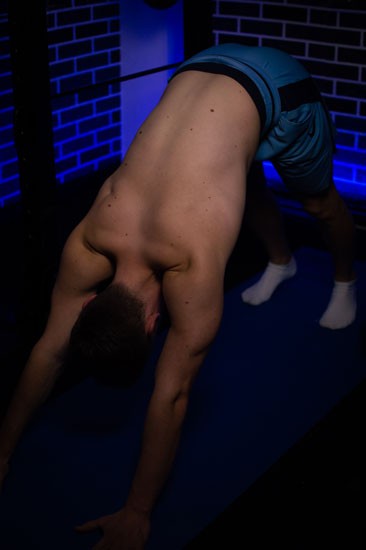
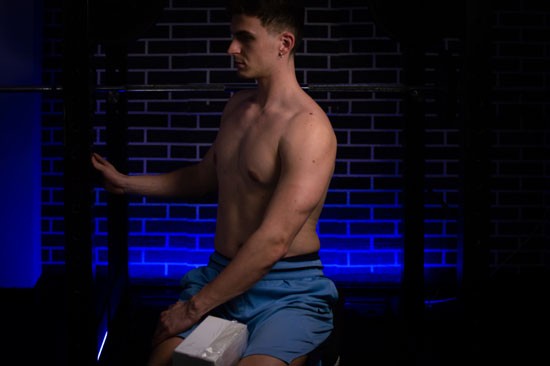
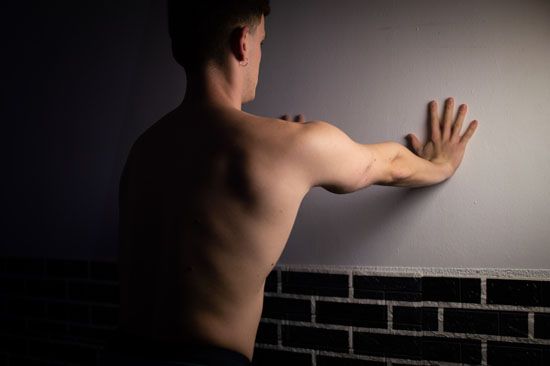
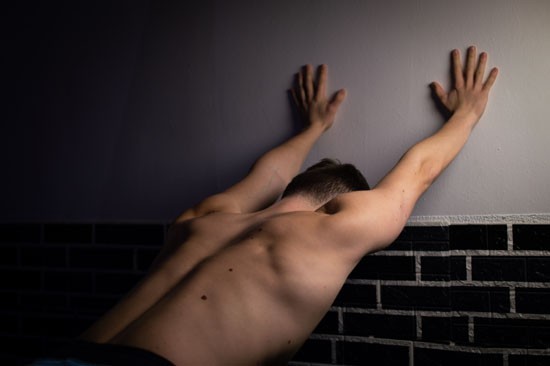
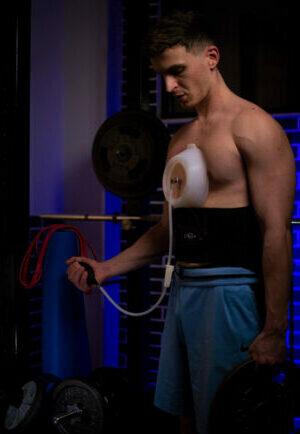

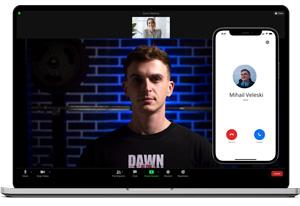
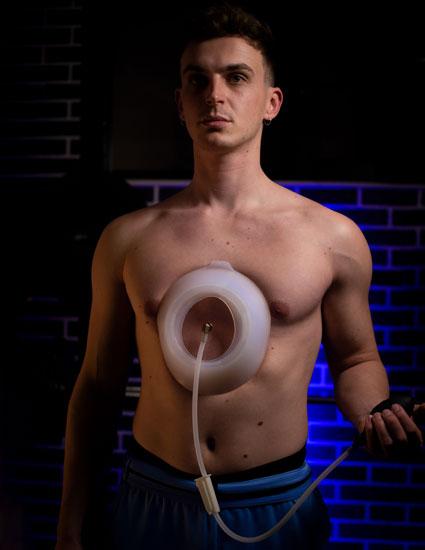

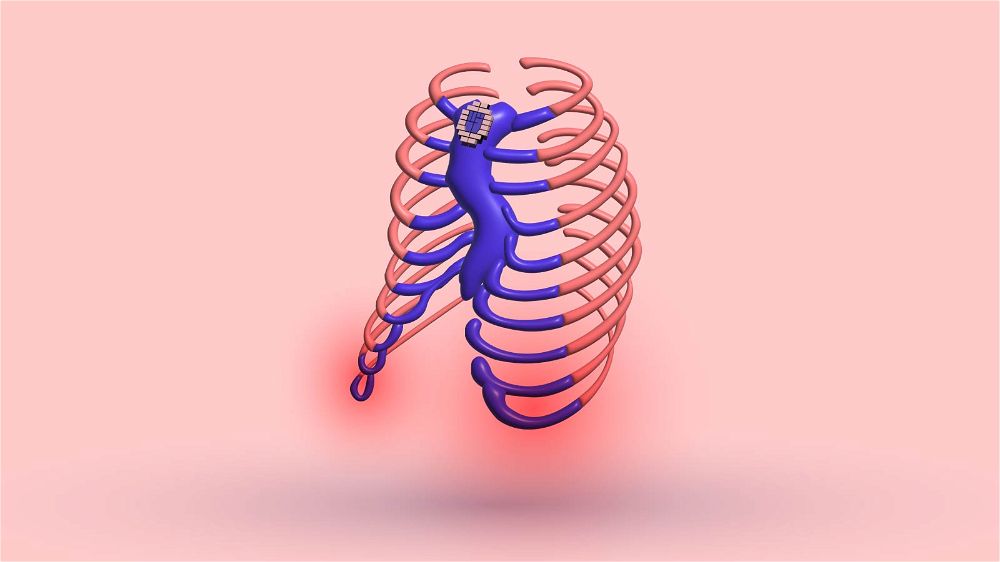
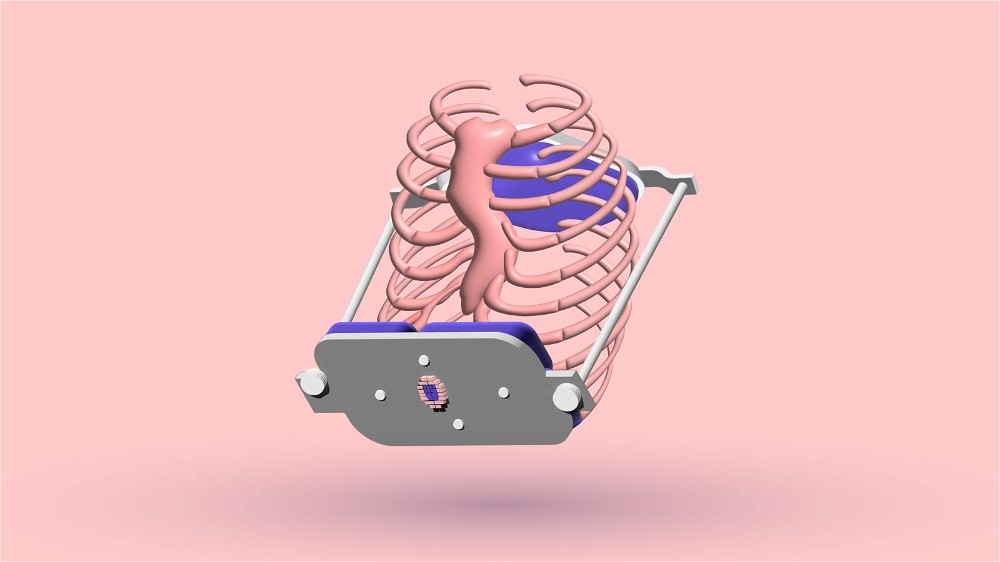
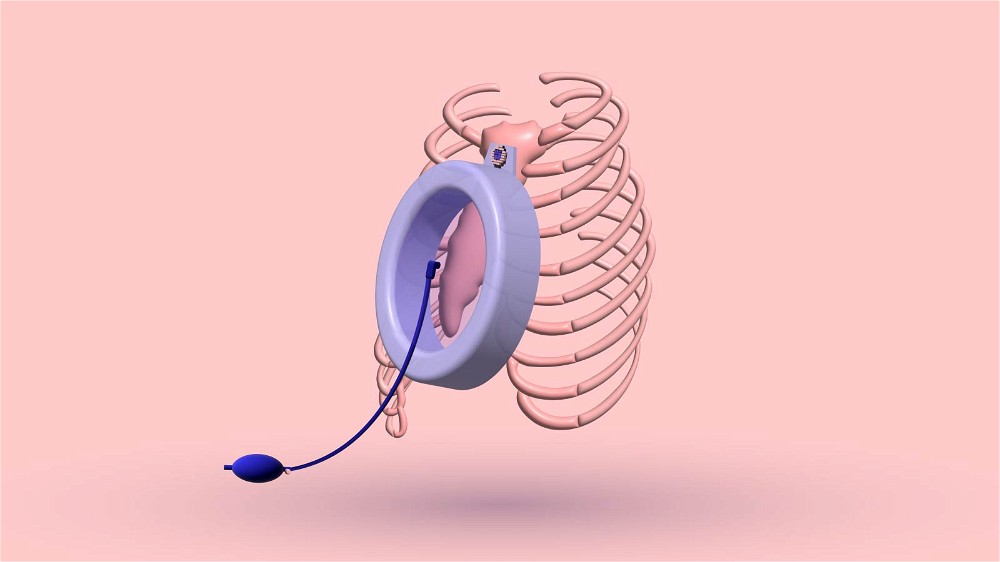
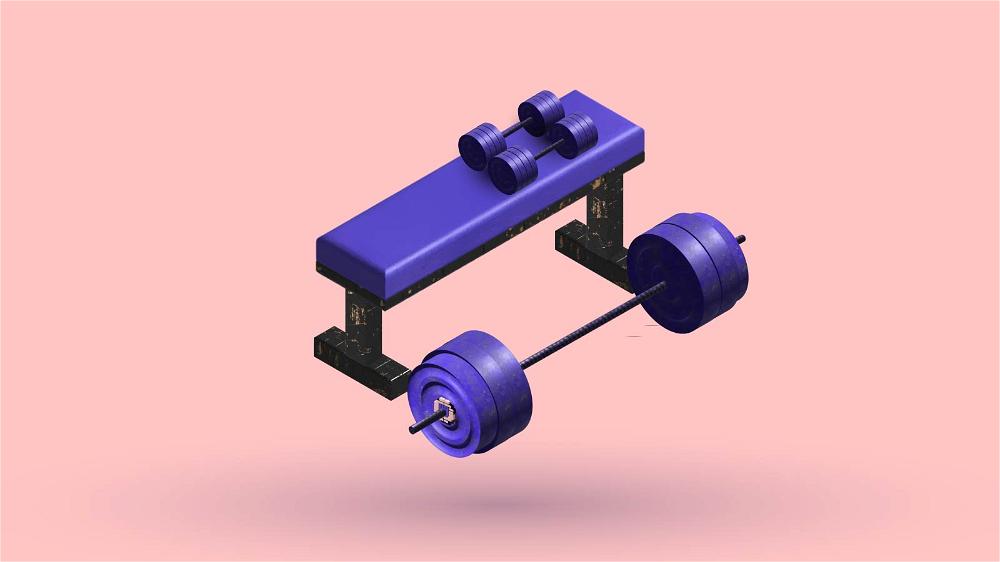
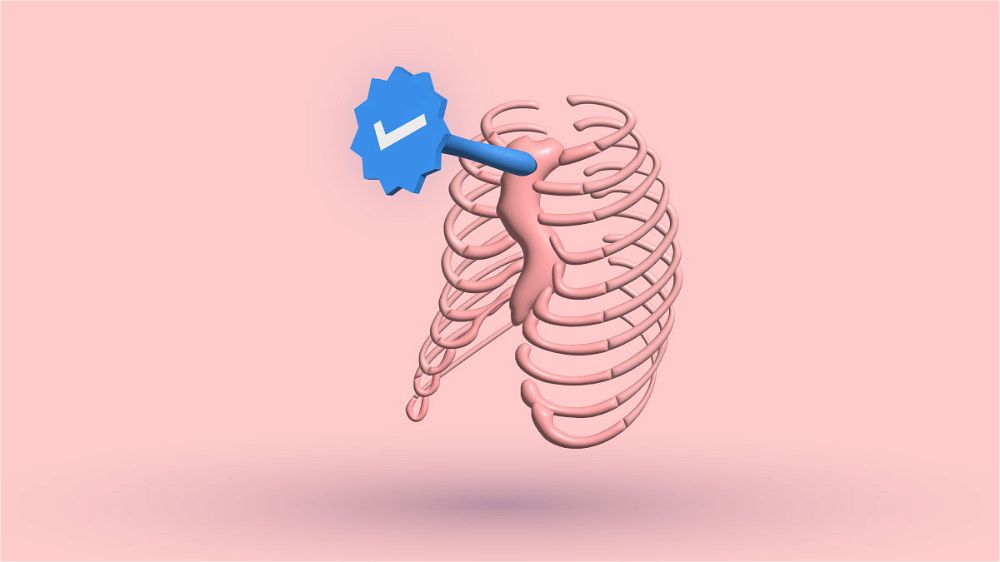
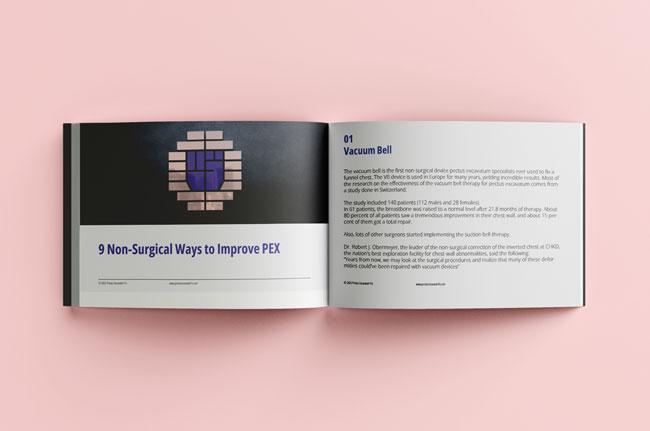


Thank you I went though the same experience as you. Im acting like a old guy I’m only 12 years old going to puberty. Playing games and sitting a bad posture got me involved in this situation. I need to do yoga and these steps. THANK YOU! SENPAI! IM GOING TO GET BETTER SOON!
im a 17 yrs old girl. i have the same thing but me i only have one sided flaring on my left and really make me self concious,im afraid if i would try this exercises it will worsen my flared and make it more like uneven.
I was able to find good info from your content.
Great article.
Greetings! Very useful advice in this particular post!
It is the little changes which will make the biggest changes.
Thanks a lot for sharing!
Hurrah, that’s what I was exploring for, what a material!
present here at this webpage, thanks admin of
this site.
I’m extremely impressed with your writing skills as well as with the layout on your weblog.
Is this a paid theme or did you customize it yourself?
Either way keep up the nice quality writing, it is rare to see a great blog
like this one nowadays.
Thanks for finally talking about >How To Fix Flared
Ribs – Pectus Excavatum Fix <Loved it!
I enjoy the efforts you have put in this, thanks for all the great posts.
I think that everything posted was actually very logical.
However, think about this, suppose you were to write a awesome title?
I mean, I don’t wish to tell you how to run your website, however what if you added something to maybe get folk’s
attention? I mean How To Fix Flared Ribs – Pectus Excavatum Fix is kinda plain. You should look at Yahoo’s home page and see
how they create article headlines to get people to open the links.
You might add a video or a related picture or two to grab people
interested about everything’ve got to say. In my opinion, it would bring your posts a little
bit more interesting.
This is my first time pay a quick visit at here and i am actually happy
to read everthing at single place.
Its like you read my thoughts! You seem to grasp so much approximately this,
like you wrote the book in it or something.
I think that you simply can do with some percent to power the message home a bit, however instead of that, that is great blog.
A fantastic read. I will certainly be back.
Very rapidly this web page will be famous among all blogging and site-building
people, due to it’s fastidious articles or reviews
Ahaa, its good discussion regarding this article here at this website,
I have read all that, so now me also commenting
at this place.
That is very interesting, You are a very professional blogger.
I have joined your rss feed and stay up for in the hunt for
more of your fantastic post. Also, I have shared your web site in my
social networks
Saved as a favorite, I really like your web site!
Excellent site. A lot of helpful information here.
I am sending it to some friends ans additionally sharing in delicious.
And naturally, thank you for your sweat!
Hello, I read your blogs regularly. Your writing
style is awesome, keep doing what you’re doing!
I could not refrain from commenting. Perfectly written!
Hi there friends, fastidious piece of writing and fastidious urging commented at this place, I am
in fact enjoying by these.
Fantastic goods from you, man. I have understand your stuff previous to
and you are just extremely fantastic. I actually like what you have acquired here, certainly like what you are
saying and the way in which you say it. You make it enjoyable and you
still care for to keep it smart. I can not wait to read much more from you.
This is actually a great site.
It’s amazing to go to see this site and reading the views of all mates on the topic of
this article, while I am also eager of getting knowledge.
Thank you for the great post. I am 34,and allready gave up on fixing this problem,especially in a country where the only solution is an oldfashioned surgery. I will for sure try this exercises, but it would be very motivating to see the results on you or somebody who tried it. Is it a severe improvement or just a tiny one…maybe some pictures,if it’s not to much to ask. Thank you anyway.
Hey bro…thanks for this article..its very informative..i wanted to tell you my story..i never had this rib flare or pectus excavatum…..but when i was 17 i realised my posture wasn’t correct and i started experiencing problems when trying to sit straight…slowly i noticed that my left rib had started pointing outwatds and my left rib had started pointing inwards…although my chest was fine…but my fib flare got severe day by day…its been 3 years since then and i am still suffering with this problem….i want to get it fixed even if it takes me an year or so….please help…
I really hope this will work. I’m a dancer, and because of my flared rib I can’t do all of the stretches correctly. Also, when you have a tight leotard, flared ribs look even stupider.
Hi there, I log on to your blog regularly. Your story-telling style is awesome, keewp itt up!
You are so gracious as to provide this information without charging for it. Bless you for that. I have birth defects that I lived with knowing something was wrong with me, but radiologist literally overlooked time and time again. The worst being spina bifida, a tethered spinal cord and flared rib cage. I have always been very sway back and being younger was very athletic. Over the years these birth defects took their toll in my 60s I struggle to breathe. Having physical therapy for the flared rib cage helped, but I stopped doing the exercises. I was looking for a binder to tighten my lower rib cage so I could breathe better because my air gets trapped inside my lower lungs so I can’t expel my air and I am short of breath now. You’re right that this has affected my heart my digestive system and my health. Your article has prompted me to start exercising again and following your suggestions. Can’t thank you enough.
Can’t tell you how helpful this had been for me- thanks so much for this
My left rib is super pointy and my right ribs are fine. I was wondering what brace/bandage do you recommend for asymmetrical rib flare. I’ve looked through your TOP 5 PECTUS EXCAVATUM BRACES IN 2022, ULTIMATE REVIEW, but I am still not sure which one is best for asymmetrical ribs since this article seems to cover more symmetrical rib flare issues rather than asymmetrical ones.
Thx for this…Didn’t realize that Rib Flare was a thing. Never met anyone else with it. I just randomly saw some bandage on amazon and thought Hmmm wonder if it’s noticeable. I had surgery for scoliosis before I finished growing, so I just assumed a small spine, big everything else. I assumed cosmetic surgery was the only choice. I’ll be making some changes, although with Physical Therapists to guide me….now that I know it can make a difference. I am lucky to be so gorgeous from the neck up to the waist down… or I would be an entirely different person…Thx again for the eye-opener.